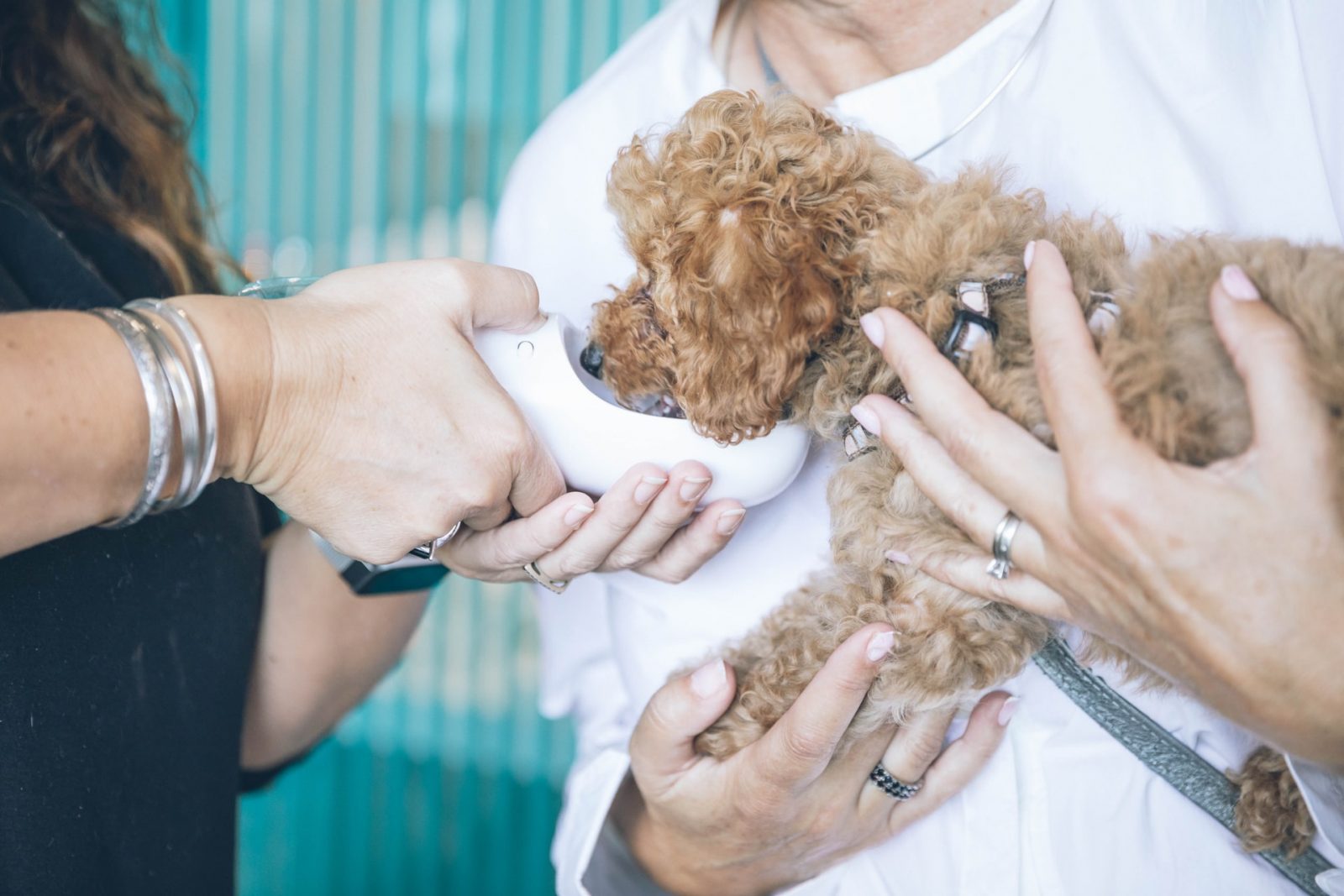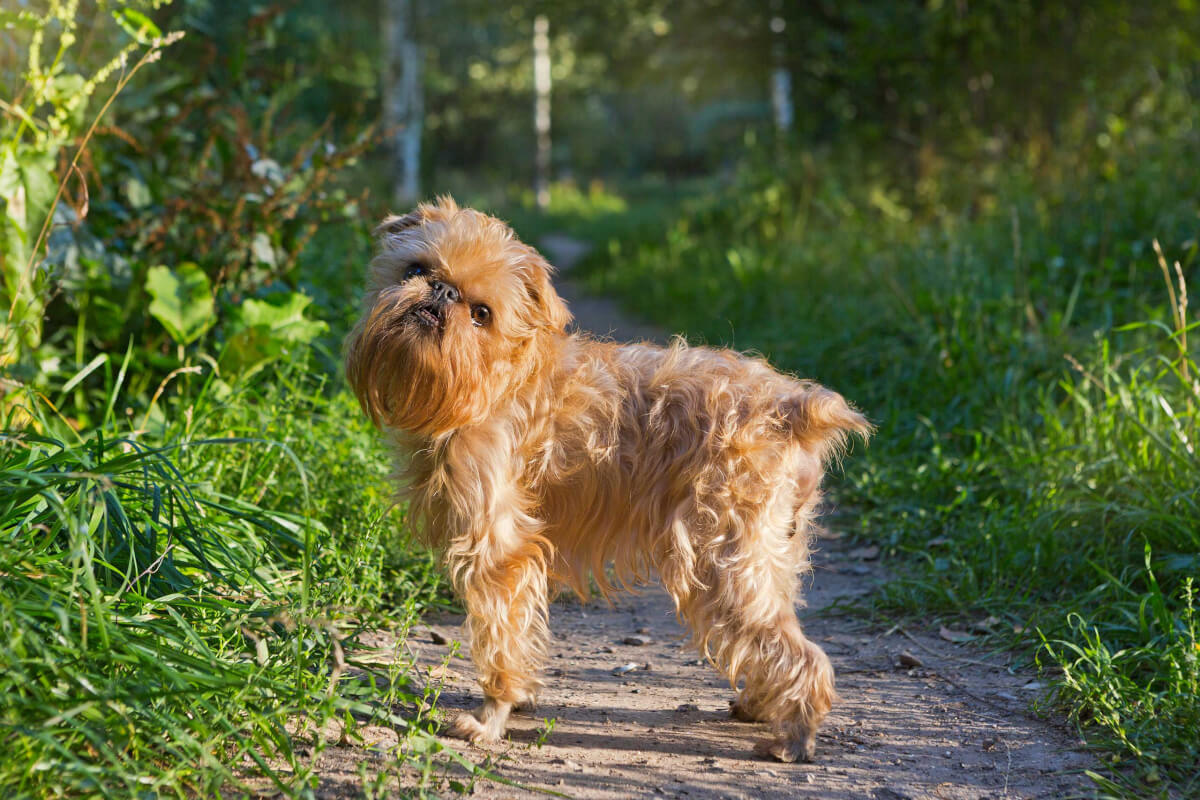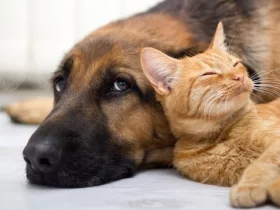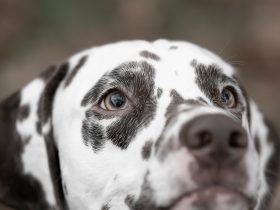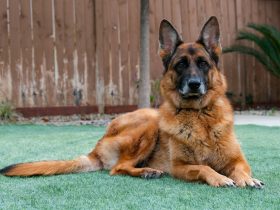First aid is the immediate and temporary help you can give your dog in case of an accident. Do what you can to save the dog’s life, then get him to a veterinarian. Don’t try to do more than you know.
There are some minor wounds, injuries and accidents in which you may be able to do all. that is necessary. But if you are in doubt as to their severity—and we’ll repeat a previous warning—let the veterinarian take over.
In rendering first aid, keep cool, work quickly and quietly, reassure the dog and use restraint when necessary. Remember that injured dogs are in pain and have great fear. They will often snap or bite in their pain or fear. When possible, apply an emergency muzzle before handling the dog.
Serious bleeding
Cut or torn arteries and veins result in serious bleeding. If the bleeding is not controlled, your dog can bleed to death. Therefore, your promptness in controlling bleeding may save your dog’s life.
Symptoms of serious bleeding
Arterial bleeding: You can tell arterial bleeding by the bright red color and the spurting or welling of the blood from the wound.
Venous bleeding: In venous bleeding the blood is dark red and flows steadily from the wound. It may also ooze out.
First Aid
APPLY PRESSURE AT ONCE!
You can apply direct pressure on a sterile pad, clean handkerchief or towel. Place it on the wound and press down firmly. Direct pressure rarely fails to control bleeding, if enough pressure is exerted.
If for some reason you can’t check the bleeding by using direct pressure, then apply pressure at the nearest pressure point.
Should you be unable to control the bleeding at the pressure points, apply a tourniquet. Use a belt, necktie, roller bandage or strip of cloth for the tourniquet. The best tourniquet is made from material that is 2 inches wide. Fasten the tourniquet close to the wound and between the wound and the dog’s heart. Make the tourniquet tight enough to check bleeding, wrap it around the dog’s leg twice and then knot it. Do not remove the tourniquet no matter how long it has been on. Take the dog to a veterinarian and let him remove the tourniquet.
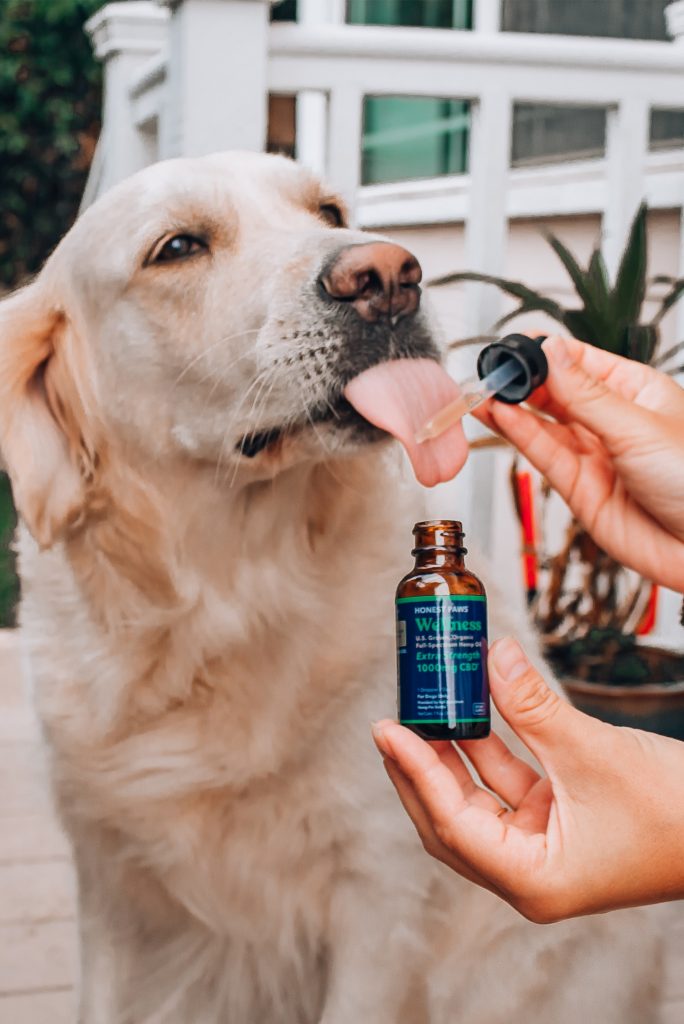
Minor cuts and wounds
Minor cuts, wounds, scratches and the like can be treated by the dog himself. Since his saliva contains a germicide, let him lick those wounds he can reach. The others you can treat. Clip the hair from around the wounds and wash the area with mild soap and water. After washing, apply an antiseptic powder, such as BFI, or a liquid antiseptic, such as metaphen. It isn’t necessary to bandage superficial wounds or cuts.
Shock
Shock is caused by an interference with the blood supply to the brain and other factors. It usually accompanies severe injuries, burns, snakebite, etc. You should treat for shock as a matter of routine, but only after you have attended to serious bleeding or stoppage of breath.
Symptoms
The dog may or may not be conscious. His eyes will be glassy and have a vacant stare. He will shiver or tremble. His breathing is irregular; deep, long breaths alternated with shallow ones. The dog may also vomit.
First Aid
A dog in shock loses his body heat very quickly. This is due to poor circulation. Keep him warm. Cover him with a blanket or heavy coat. If possible, slide some newspapers or another coat or blanket under him. Remember there is an interference with the blood supply to the brain, so try to lower his head. Do this by folding a coat or blanket and putting it under his body, letting his head hang down. If the dog is conscious, keep him quiet. Get him to a veterinarian as soon as possible.
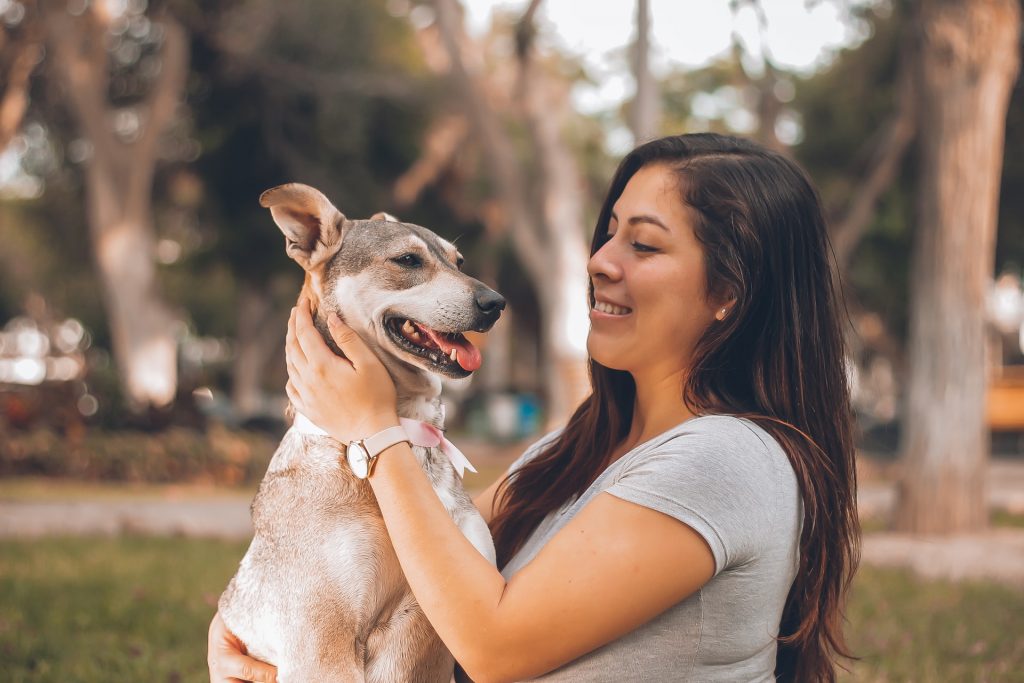
Proper first aid supplies
Here is a short list of some of the first aid supplies that you should have on hand. These supplies can be found in many pet catalogs, pet stores or internet websites. You can also find a lot of them right in your local drug store.
You should have such things as Ammonia, Peroxide, some sort of antibiotic cream, hydro cortisone, eyewash and a liquid antihistamine.
Having the basic materials to handle a first aid situation is important as well. Here is a short list of some of the things you should have on hand just in case you might need them. Gauze, bandages, adhesive tape, some cotton (absorbent) scissors, tweezers, thermometer (rectal) blankets, and a plastic bowl for mixing medicines.
Most important make sure you have your vets number handy, preferably written on the package where you keep your doggy first aid supplies. A contact number for after hours and emergencies should be kept as well.
Car and truck accidents
Dogs struck by cars or trucks may sustain severe injuries ranging from a broken pelvis to internal injuries. Such injuries are not for the amateur to fool around with and possibly cause complications. They require expert treatment. But first aid is almost always necessary, especially when severe bleeding or shock are present.
What to do if your dog is struck by a car or truck
First, remove the dog from the road or street, out of the path of traffic. Remember that injured dogs may bite. If the dog’s mouth is not injured, put on an emergency muzzle. Slide the dog onto a blanket, burlap bag or coat and drag or slide him out of danger.
Next, get to work. Control all bleeding. After this, treat for shock. Examine the dog for possible fractures. A break in a leg is usually visible as a large lump or you may see part of a bone protruding through the skin. The dog cannot move the broken part. Do not move the dog or broken part unnecessarily. If there is an obvious break, put a splint on it.
How to put on a splint
Use stiff cardboard, wood, folded newspapers or 4 -inch wire mesh for splints. Gently place the splint against the broken parts, with the upper and lower ends of the splints extending well beyond the break. Fasten the splints above and below the break with roller bandage, adhesive tape or strips of cloth.
If the dog tries to struggle to his feet and can’t get his rear end up, he may have a broken pelvis. You can’t put a splint on the pelvis. The best you can do is try to keep the dog still. Place him on a board, have someone hold him there, and transport him to a veterinarian.
After you’ve done all you can for the dog struck by a car or truck, get him to a veterinarian.
Transporting the injured dog
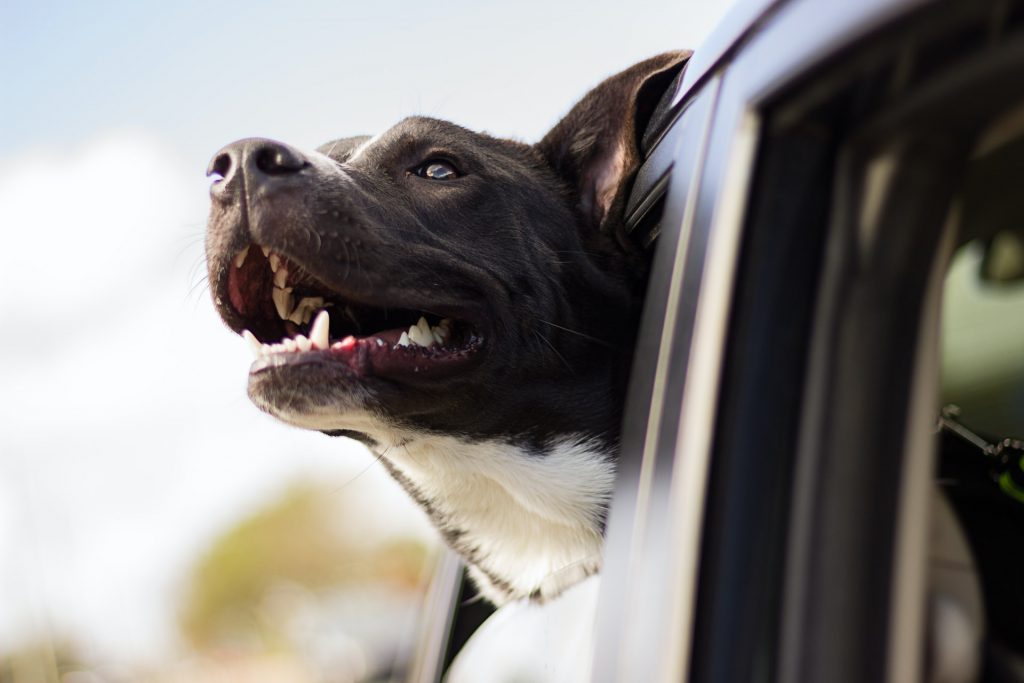
Since most veterinarians rarely come out to treat a dog, you will have to get the dog to the veterinarian. Take care in moving the injured dog. Rough or unnecessary handling may result in further injury.
If you have assistance, make a stretcher using two poles and a coat. Broomsticks, mop handles or tree branches can be used for poles. Turn the coat sleeves inside out and slide the two poles, one through each sleeve opening. Button the coat over the poles and the stretcher is ready.
If you happen to be alone, you will have to carry the dog across your shoulders. Lift him up gently and place his body across the back of your shoulders, against your neck, with his head and front legs over one shoulder. His hind feet should hang over the other shoulder. Shepherds often carry sheep and lambs in this fashion.

Breath stoppage (Caused by smoke, gas or drowning)
Dogs may be overcome by smoke, gas and excessive water in the lungs. When this occurs, you will have to revive the dog. Speed is essential.
Symptoms of breath stoppage
The symptoms include unconsciousness, breathing stopped, pulse weak or absent (check for pulse at pressure points) and irregular heartbeat.
First Aid for smoke or gas exposure
Quickly remove the dog from the smoke- or gas-contaminated area. Work fast and take precautions against being overcome yourself. There is usually more air three or four feet from the ground or floor.
As soon as you get the dog out into the fresh air, start giving him artificial respiration. Place the dog on his side, with his forelegs stretched out in front, his hind legs stretched out to the rear.
Take your handkerchief and pull out his tongue. This is to prevent the tongue from lolling back and obstructing his breathing passage. Next, put your two hands on the dog’s chest, press down, release, wait, press down again, release again, wait again. Do this rhythmically; maintain a press down, release and wait system of thirty times per minute for large dogs, twenty times per minute for smaller dogs. An aid to keeping the rhythm may be as follows: as you press down, say “out goes the bad air”; when you release, say “in comes the good.” You may have to work a long time, but stay with it. Treat for shock when the dog revives and then get him to a veterinarian.
First Aid for drowning
- First of all, a drowning dog is rare. Most dogs are instinctive swimmers. But there is always a first time.
- Here’s what to do after the dog has been hauled out of the water:
- Take off his collar. If he’s not too large, hold him upside down to drain out the water.
- Then apply artificial respiration. Have someone call a veterinarian. Keep working on the dog. Treat for shock when he revives.
Electric shock and lightning
Occasionally dogs get electrocuted or are struck by lightning. Electric shocks or lightning strokes can be fatal. However, until a veterinarian certifies the dog is dead, make every attempt to revive him.
Symptoms
Same as for smoke, gas or drowning. There may be burns. Treat for breath stoppage first!
First Aid for electric shock
If the dog is lying across a live wire, find a dry board or stick and pry the dog off the wire. Do this without sliding or pushing the dog over the wire, otherwise you will cause more burns. If the wire is lying on the dog, use the dry board or stick and flip the wire off. If possible, shut off the current.
Next, start artificial respiration. When the dog revives, treat any burns. Get the dog to the veterinarian as soon as possible.
Lightning
Quickly start artificial respiration. When the dog revives, treat any burns. Take him to a veterinarian.
Burns and scalds
Dogs can be severely burned by exposure to flame, hot ashes, lightning, electric shock or chemicals. They can also be scalded by hot liquids or steam.
First degree burns, in which the skin turns red, are the most common type of burns. Severe burns, in which the skin is charred or blackened, may occur.
Symptoms
First degree burns: skin red or blistered. The hair is singed. Severe burns: skin charred or blackened.
First Aid
If the burns are small, first degree and localized to small areas, proceed as follows:
Carefully trim away hair from burned areas. Wash the burns with mild soap and water. Apply a thick grease, such as Vaseline, axle grease, butter or commercial burn ointment. Tea has often been recommended in the first aid of burns. Tea contains tannic acid which reduces pain and helps to minimize fluid losses. Fluid losses are the greatest danger in burns. However, tea should not be used in treating large burns or large burned areas, since the tannic acid can be toxic to cells.
If the dog has large burns of any degree, treat as follows:
- Should a veterinarian be within an hour’s travel, cover the burns with clean cloth and take the dog to the veterinarian.
- If you are in an isolated place, you will have to render first aid. Carefully trim away hair from the burned areas, cover burns with thick grease or burn ointment and put a sterile pad or cloth on top. Next, wrap a clean cloth over the first dressing, then bandage the whole dressing with roller bandage or cloth. Treat for shock. Get the dog to a veterinarian as soon as possible.
- In treating burns of any degree, do not touch them with your fingers, breathe on them or apply any antiseptic. Simply apply a thick grease or ointment to exclude air and prevent fluid losses.
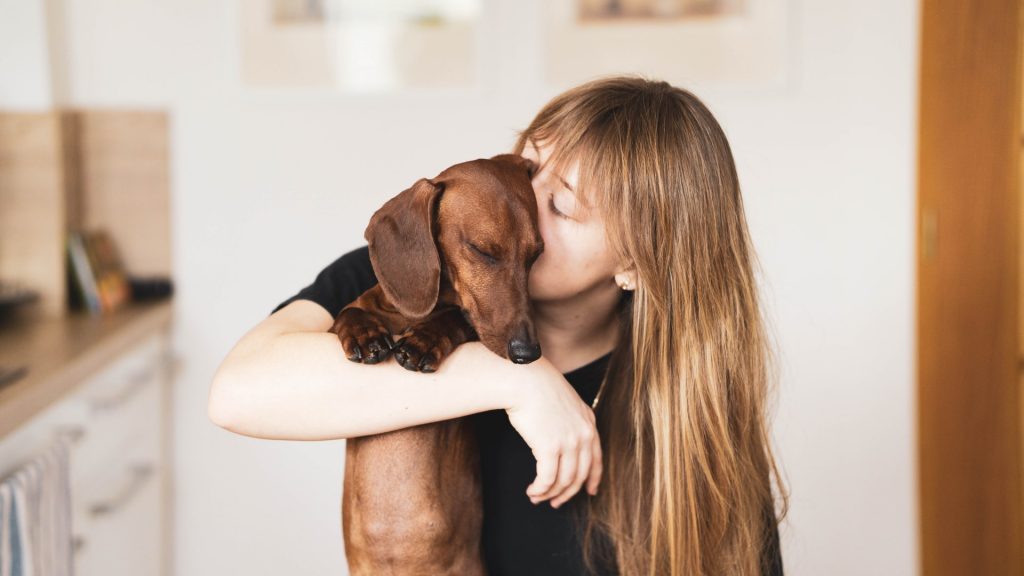
Poisoning
Poisoning is always a hazard with dogs, especially if the dogs are roaming loose. Dogs are scavengers and like to root in garbage cans, dumps and other areas that may be treated with rodent or other vermin poisons. There is also the possibility of dogs being maliciously poisoned or picking up poisons around the house. Insecticides, plant sprays and paints should be kept locked up out of the reach of dogs and children.
There are many kinds of poisons and antidotes. Toxicology is beyond the scope of this section. But you should know the symptoms of poisoning and the standard treatments.
Symptoms of poisoning
These vary with the type of poison, but the general symptoms are convulsions, burned mouth (alkalies and acids) and unconsciousness.
First Aid
Get to work quickly, you may not have much time. Have someone call a veterinarian and describe the dog’s symptoms.
If you know what kind of poison your dog ate, read the label on the bottle or can and follow directions as to antidotes.
If you don’t know what kind of poison your dog ate, proceed as follows:
If his mouth is burned, don’t make him vomit. If it isn’t, then make him vomit. You can cause him to vomit by giving him a solution of soap and water, equal parts of hydrogen peroxide and water, two teaspoonfuls of table salt in a cup of water, or a regular emetic, such as ipecac, if you have it. Follow directions on label if you use a prepared emetic. Otherwise, put the other solution, whichever one you use, in a bottle and pour into a pouch in the side of the dog’s mouth.
After the dog vomits, give him milk or slightly beaten egg whites. Put the milk or egg whites in a small bottle and pour into a mouth pouch.
Follow this by giving the dog a teaspoonful of Epsom salts in a little warm water. Get the dog to the veterinarian as soon as you can.
Lead poisoning
Dogs can get lead poisoning from eating paint.
Symptoms
A dog suffering from lead poisoning will show most of the symptoms of rabies, plus a painful stiffened gait. If you are sure the dog has not been exposed to rabies, treat for poison. Otherwise, handle him as for rabies.
Choking
Choking may be caused by a bone or other foreign object lodged in the throat.
Symptoms
The dog with something stuck in his throat will paw at his mouth and try to retch. He may also gag or gasp. There may be a bloody, foamy saliva. In extreme cases, breathing stops.
First Aid
If breathing has stopped, apply artificial respiration.
If you are satisfied that the dog has not been exposed to rabies, try to remove the object from his throat. But, if possible, rush him to the veterinarian.
Go after the object in the throat as follow: Open the dog’s mouth by grasping his lower jaw in your left hand, pushing down his upper lip so that it covers the teeth, holding them there with your fingers. Next, tilt his head upward, so that his lower jaw hangs open. Reach in with the fingers of your right hand and try to grasp the bone or foreign object. Work quickly and hold his mouth open. If in doubt as to his symptoms, call your veterinarian.
Snakebite
There are four kinds of poisonous snakes in the United States. They are the rattlesnake, copperhead, water moccasin and coral snake.
Just how dangerous are the poisonous snakes to dogs? It all depends on the condition of the snakes and the location of the bites. Also, on the amount of venom injected into the bites. When the writer was a veterinary technician in the Army during World War II, a K-9 dog was bitten by a water moccasin. The accident occurred near a swamp in Georgia, with the dog being bitten on the tip of the nose. Despite emergency first aid (which was difficult because of the location of the bite), the dog died. The snake was very potent and the bite was in a dangerous place.
Symptoms of snakebite
The symptoms of snakebite include swelling, one or two puncture marks, intense pain, weakness, shortness of breath, vomiting, poor vision and paralysis.
First Aid
If the snakebite occurs within a short distance of a veterinarian or medical doctor, get the dog to him right away. Otherwise treat as follows: Keep the dog quiet and still. Too much moving around tends to speed up the heart action and increase the movement of venom toward the heart. If the dog wasn’t bitten on the nose, put an emergency muzzle on him.
Remember, the principles of snakebite treatment are constriction, incision and suction.
If the bite is on a leg, tie a belt, handkerchief or strip of cloth around the leg and above the snakebite and swelling. You do this to restrict the flow of venom. It is not a tourniquet, but a constriction band. Loosen it if the dog’s leg gets cold. Remove for one minute in every fifteen minutes.
If you have a long-haired dog, quickly trim away the hair from around the snakebites. Next, sterilize a knife over flame. Now make 4 inch cross-cuts or X’s through each snakebite puncture. Don’t be squeamish about this; your dog’s life depends on it. Press the cuts to encourage the flow of blood.
Use suction to draw out the venom. Do not use your mouth to suck out venom. If you have a snakebite kit, use the suction apparatus in the kit. If not, make one as follows:
Get a small drinking glass, bottle, vial or canteen. Light up a twisted piece of paper and insert the flaming paper into the vessel. Quickly place the vessel (you can leave the paper inside; it will go out) onto the snakebite incisions, with the open end of the vessel into the bite. Leave the vessel there until it falls off by itself. Repeat this suction routine at least a dozen times.
There is an elementary physics principle behind this technique. Placing a strip of burning paper into a vessel causes the oxygen to be used up. This, in turn, reduces the atmospheric pressure in the vessel, creating a suction. But you’ve got to slap the vessel down on the incisions before fresh air surges into the vessel. Try this on yourself; it works.
If the swelling near the snakebite begins to spread more than 3 inches above the bite, move the constriction band above the new swelling. Make new incisions here and repeat the suction. Try to get the dog to drink water. Then get him to a veterinarian as quickly as possible.
Encounter with a skunk
The skunk is a docile, easygoing animal. He rarely hurries or gets out of your way. He’ll let you or your dog approach quite close. And that’s why dogs usually get sprayed. If your dog runs afoul of a skunk, you’ll have no difficulty in diagnosing it!
Symptoms
First, a powerful and distinct odor. The dog’s eyes may be inflamed and he may paw at them.
First Aid
You’ll hear of all kinds of treatment to get rid of the skunk smell. Very few of them actually eliminate the strong odor. It just has to wear off.
However, to hasten the process, you can do something.
Wash the dog thoroughly with soap and water. Then wet him down with plenty of tomato juice. Rinse off the tomato juice with a 5% solution of ammonia. Avoid getting the ammonia solution in the dog’s eyes. They’re already smarting from the skunk spray. Put some eye ointment in the eyes.

Porcupine quills
While porcupines are not too common, your dog may happen to meet one. If the dog gets too nosey, he may well end up with his nose and face stuck full of porcupine quills.
First Aid
Porcupine quills are painful to extract. If possible, get the dog to a veterinarian. If necessary, the veterinarian can administer an anesthesia and extract the quills while the dog is asleep.
But if you have to do the job, do it this way:
Have someone restrain the dog; he’s going to resent having the quills extracted. If possible, try to get an emergency muzzle on the dog. It may be difficult, and you may not be able to get a good fit, but do the best you can.
Use a pair of pliers or strong tweezers to pull out the quills. Pull slowly and steadily—don’t jerk them out. If you have no pliers or tweezers, two large coins—half dollars or silver dollars—can be used as substitutes. Place a coin on either side of a quill, press together and slowly draw out the quill. Pulling with your fingers will not do, the quills can be slippery.
After all the quills are extracted, apply antiseptic powder to each quill hole.
Bee, hornet and wasp stings
Every once in awhile a dog gets stung by a bee, wasp or hornet. The sting can be very painful, particularly if on the end of the nose. Some dogs are allergic to insect stings and will have large swellings at the site of the sting.
Symptoms
A dog stung by a bee, wasp or hornet will suddenly yelp, start forward, then look wildly around for his assailant. He may race away, looking around and behind him. Usually the affected part will swell and itch.
First Aid
If possible, remove the sting with tweezers. Then apply a baking-soda paste. Cold packs (ice or wet cloths) will help to relieve the pain and swelling. Calomine lotion will ease the itching. If the swelling persists a few days, take the dog to the veterinarian. The dog may have an allergic reaction.
Dogfights
It’s the rare dog that doesn’t get into a dogfight sooner or later. The canine gladiators usually come out of the fight with various bites. Before you can render first aid, you’ll have to break up the fight. Proceed with caution; too many people have been seriously injured trying to break up a dogfight without knowing how.
Remember that in the fury of the fight, both dogs will be snapping and slashing at each other. Neither of them will pay much attention to your shouts or commands. They’re concentrating too hard on the battle and in not getting knocked down. You’ll have to provide some strong distraction.
Don’t ever try to pull your dog out of the fight by reaching for his collar. That’s a good way to lose a hand or some fingers. If you have help, try this technique: each of you wait for an opening and grab a dog’s tail. When you get hold of the tail, pull the dog toward you, quickly swinging him away from the other dog, and heave him as far as you can. If the dogs try to rush back into battle, block your dog and give him the command to sit. Have the other person try to chase off the other dog.
If one or both dogs happen to be tailless, you’ll have to use another technique. Try banging on a bucket or flinging a chain at the dogs. If near your home, or someone will help you, get out a hose and squirt a stream of water on the fighters.
Dogs usually start a fight very quickly. They can be ended just as quickly, if you can divert the dogs from the battle. Remember, just don’t reach for your dog’s collar. Use as much distraction as possible, the louder the better. After the fight, you can attend to the dog’s wounds.
Attack by a cat
Cats can do considerable damage to dogs. Usually the dog gets bitten and clawed around the eyes, nose and face, since he more or less leads with these parts.
Before you can give the dog first aid, you’ll have to get rid of the cat. When a cat and dog tangle, the cat may use one of several tactics. He may claw the dog in the nose and head for the nearest tree or high fence. Or he may strike at the dog, arch his back and wait for the dog to make the next move. Finally, he may jump up on the dog’s back and dig in with his claws.
In the first two instances, you can frighten off the cat by making threatening gestures and loud noises. Given the chance, the cat will be glad to get away. In the latter case, you’ll have to get the cat off the dog’s back. You may take some of the dog’s hair and skin with the cat, but there’s no help for it. Grabbing the cat by the tail will not work; he’ll simply double up on your arm and sink his claws and teeth into you. The best way to get him off is by using a hose on him. In the absence of a hose, take a stick, slide it under the cat and propel him off.
First Aid
Cat bites are more dangerous than dog bites, since they are small and tend to close up. When they do close up, there is always the possibility of abscesses or tetanus. So, if no artery or vein is involved, let the cat bites bleed freely.
Unless the cat bites and scratches are very jagged and require stitches, let the dog lick those he can reach. You can treat those he can’t get at. Just to be on the safe side, apply an antiseptic to each bite and scratch. Do this by rolling absorbent cotton around toothpicks, dipping these small swabs into metaphen and inserting the swab into the cat bite. You’ll have to restrain the dog when you do this. It’s a good idea to have the veterinarian give the dog a tetanus injection.
Heat exhaustion
In the section on the dog’s body and how it functions, you will recall that we mentioned the dog’s difficulty in adjusting to excessive heat. Your dog can easily be overcome by heat if you leave him in a hot car with windows closed or in a poorly ventilated building.
Symptoms of heat exhaustion
Heavy and labored breathing, vomiting and prostration are symptoms of heat exhaustion.
First Aid
Remove the dog to a shady and well-ventilated spot. Next, wet him with cold water, particularly his head. When he regains consciousness, give him some diluted black coffee. Don’t try to give him any liquids while he is unconscious. Use a small bottle and pour the coffee into a sac or pouch in the side of the dog’s mouth. Consult your veterinarian for further treatment.
Lameness
Dogs often suffer from sore feet or lameness. Lameness may be caused by sprain, fracture, thorn or other foreign object, rheumatism, injury, etc.
Symptoms
The lame dog will limp, hop on three feet, hold up one foot and whimper. Pain, swelling and bleeding may be present.
First Aid
If necessary, restrain the dog. Gently examine the lame leg or foot. Look for thorns, glass, stones, etc. Check the leg for possible fractures. Remove any foreign objects from the pads or between the toes.
After you’ve removed any foreign objects, wash the part with mild soap and water. If the cuts are minor, let the dog lick them. If swelling is present, apply icepacks or cloths wet with cold water. Examine carefully for fractures of the toes. These will usually appear as swellings and the dog will be unable to move the broken toes. If there are fractures, or lameness persists, take the dog to the veterinarian.
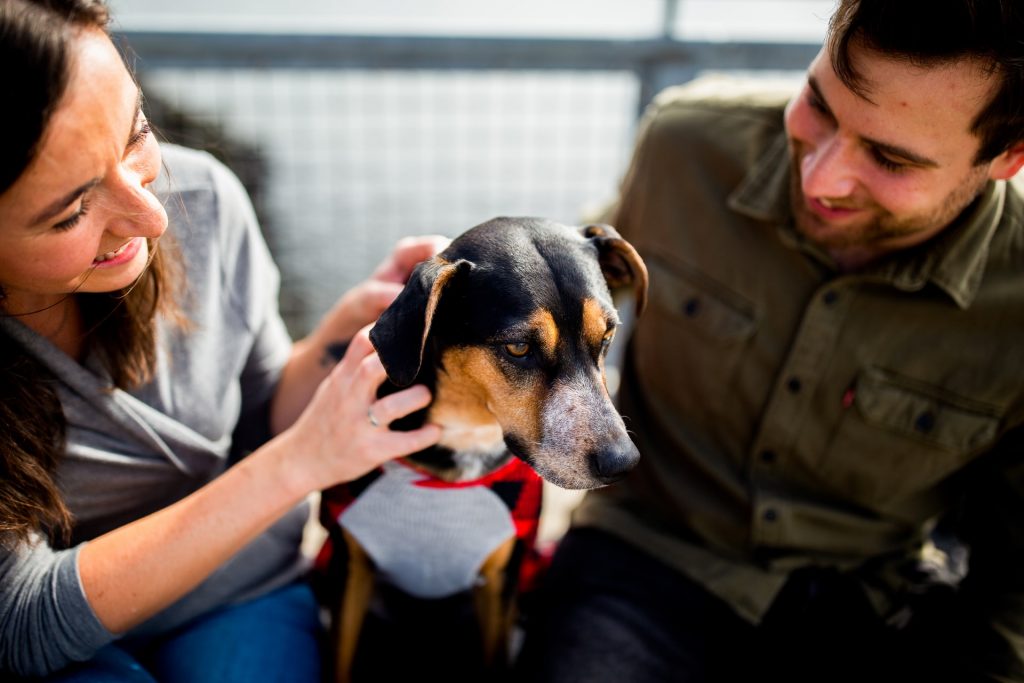
Dog first aid kit
A dog first aid kit around the house can be a very handy item in time of accident. It doesn’t have to be an elaborate kit. But there are some basic medicines and material you should have. Later, you can add to the kit.
Here are some suggestions for the kit:
- Tweezers for removing ticks, thorns, etc.
- Roller bandage (1 and 2 inch)
- Thermometer (rectal)
- Scissors (blunt ends)
- Nail clippers
- Suction apparatus for snakebite
- Hydrogen peroxide
- Metaphen
- Eye ointment
- Burn ointment
- Absorbent cotton
- Adhesive tape
- BFI powder
- Insect powder
- Sticks for cotton swabs
- Mineral or sesame oil

